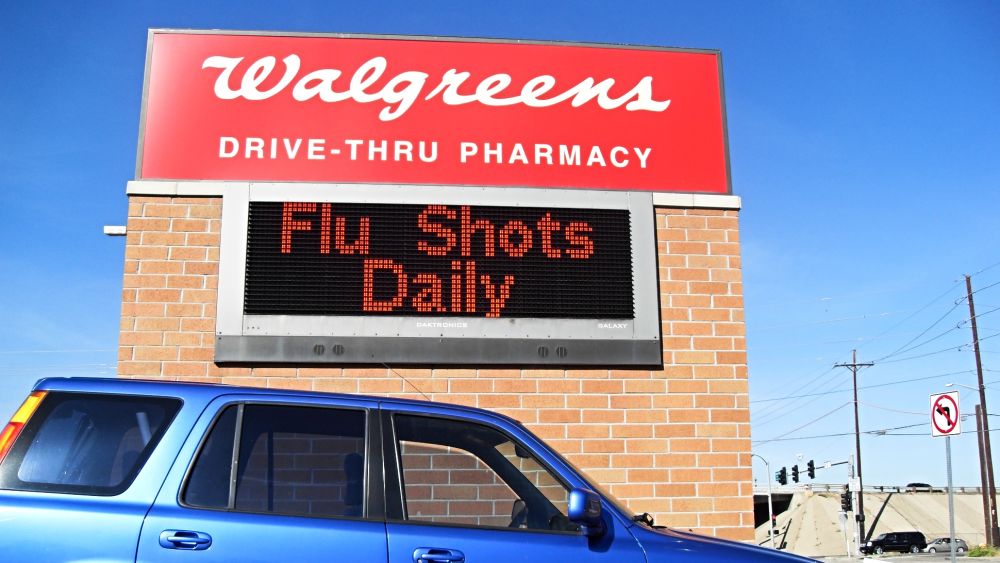It’s Pinktober Again. Are Our Breasts Benefiting?
Stacy Matson | Celebrity Health

image by: Schröder+Schömbs PR
Pinkwasher: A company or organization that claims to care about breast cancer by promoting a pink ribbon product, but at the same time produces, manufactures and/or sells products that are linked to the disease - Think Before You Pink
October is Breast Cancer Awareness Month. So brace yourself because for the next 31 days you're going to be bombarded with some encouraging, and not so encouraging, news about breast cancer as well as a million opportunities to spend your hard-earned money.
First, the encouraging news.
A major study sponsored by the National Cancer Institute found that women with the most common type of breast cancer; early-stage, localized, and hormone positive, could avoid chemotherapy without hurting their odds of survival.
The study focused on a gene test, Oncotype DX, which analyzes the levels of 21 genes to estimate a woman's risk of having her cancer return after undergoing surgery and traditional treatments. The test is also used to identify women who are likely to have a positive response to hormone therapy.
Of the 10,253 women in the study, 16% were classified as low risk, 67% as intermediate, and 17% as high risk for recurrence of cancer. The high-risk group was given chemotherapy and hormone-blocking drugs. Women in the middle group were randomly chosen and treated with either hormone therapy or hormone therapy and chemotherapy. Results from the women in the middle and high-risk groups are not yet available as their study is still underway.
However, results for the women in the low-risk group were recently published in the New England Journal of Medicine and the results were encouraging. The study found that after five years, approximately 99% of the patients had not relapsed, 98% were still alive, and 94% were free of any invasive cancer, including new cancers at other sites or in the opposite breast. This is exciting because low-risk women will be able to avoid chemotherapy treatments and its side effects; it may lower the cost of patient care, and it will allow doctors to reserve the use of these aggressive treatments for those patients with aggressive cancers.
Even better news is that the Oncotype DX test costs $4,175 and is covered by Medicare and most health insurers.
As for the second bit of good news, scientists in Sweden are developing a test that will predict, decades ahead of time, whether a woman is likely to develop tumors. Researchers at Uppsala University compared samples of cancerous breast tissue from 300 patients with healthy, non-cancerous, breast tissue. Nearly half the time, the normal, healthy, tissue showed genetic changes that are commonly found in advanced cases of breast cancer.
Because these changes show up years, even decades before breast cancer develops the test would allow patients to get a jump start on their treatment or be closely monitored for any changes. In essence, doctors might someday be able to stop breast cancer before it starts.
Researcher Jan Dumanski, said, “This opens up possibilities to develop diagnostic methods that could identify women at risk before the tumor is formed and much earlier than it can be detected by mammography.” According to Dumanski, this test should be available within the next five years.
The not-so-encouraging news.
A study published in the journal JAMA Internal Medicine showed that computer-assisted detection (CAD) for mammography does not help radiologists identify breast cancer or spot tumors, in fact, it makes them more likely to miss the cancers. In other words, radiologists did much better without the use of technology and because the technology adds upwards of $400 million to annual health care costs, that’s money not well spent.
Speaking of money not well spent, we raise a lot of it during the month of October. Breast cancer is a $6 billion dollar a year industry and of that, only $1 billion is used to fund research. So, where does the rest of the money go? Who is raising these funds? Should we continue to buy pink?
I get a little squeamish when I think of how the pink money is raised. Often it’s through the sale of cosmetics that contain cancer causing chemicals. Or, it’s through golf tournaments played on golf courses that are heavily sprayed with pesticides. Or, it’s $1 being given for each mile you test-drive a car that pollutes the environment. Or, it’s from the sale of drinking water in plastic bottles that contain cancer-causing BPA. As far as I’m concerned, it’s probably best to avoid this type of fundraising activity, and again, I’d probably just send a check.
Another thing that bothers me is that these companies selling pink items are not very generous with their donations. For example, if Yoplait yogurt donates $0.10 for every pink yogurt lid mailed back to them, you would have to eat three yogurts a day for four months in order to raise $36. That’s a lot of processed sugars and artificial dyes to put in your body. Again, I’d rather just send a $36 check.
And I wonder how much goes to funding various programs and services? If it’s going to research programs, what kind of program? Is it being used to fund research at major institutions that already have enormous financial support, or is it being used to support mostly underfunded innovative researchers who are looking into the actual causes of breast cancer? Is this money being used to fund free mammograms? Free health checkups? If so, are you sure it’s servicing the people who need it most? The unemployed, the impoverished, the uninsured, the woman battling her second round of cancer?
Around the world, breast cancer rates continue to rise and have steadily increased by more than 20% since 2008. So before you donate or purchase pink products think about these things. Don’t let pinkwashing corporations exploit your good intentions. But go and get a mammogram! And do your monthly self exam!
Stacy Matson is a health enthusiast from Southern California and regularly blogs on Celebrity Health for A Healthier World, as well as contributing to the Best of Best.

Introducing Stitches!
Your Path to Meaningful Connections in the World of Health and Medicine
Connect, Collaborate, and Engage!
Coming Soon - Stitches, the innovative chat app from the creators of HWN. Join meaningful conversations on health and medical topics. Share text, images, and videos seamlessly. Connect directly within HWN's topic pages and articles.
















